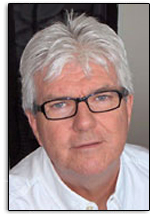I suppose humans can adjust to anything. This is particularly evident in New Delhi, India. For years the city has had the dirtiest air on the planet.* Oddly, few who live there seem worried or even conscious of it. It must be resonating with some, however, because many are now wearing white surgical masks similar to those being worn by denizens of Beijing. As a direct reaction to the problem, the United States Embassy recently bought 1,800 up-market air purifiers for use by its staff in their homes and other embassies are doing the same.
Some government houses are even suggesting that diplomats with children reconsider moving to the city. It must be working because a surge of diplomats are choosing to curtail their tours. Indian companies have begun ordering filtration systems for their office buildings.
"My business has just taken off," said Barun Aggarwal, director of BreathEasy, a Delhi-Based air filtration company. "It started in the diplomatic community, but its spread to the high-level Indian community too."1
Indian diplomats who, in the past, have expressed little to no interest in climate and pollution discussions with the United States, have recently asked the Americans for help in cleaning India's air. When President Obama left Delhi after a visit this past month, he was able to point to a series of pollution agreements. One is to implement the Environmental Protection Agency's international air quality forecasting system AIRNow. It's part of an overall climate deal that includes a pledge for concrete progress' on a pact to phase out a class of widely used refrigerants called hydro fluorocarbons. Talks were also aimed at supporting solar energy initiatives to help India reach its goal of expanding its solar energy capacity to 100 GW by 2022, an amount of power equal to the energy of about 100 nuclear power plants. The plan includes bringing the U.S. system for measuring pollution levels to many Indian cities and another is to help study ways to reduce exhaust from trucks, a major source of urban pollution. Environmentalists claim that efforts to control it - such as a switch to clean-burning natural gas for auto rickshaws - have made little long-term impact. The city continues to sprawl relying evermore on its eight coal-fired power plants while dealing with more than seven million cars that clog the roads.
Articles in Delhi publications now appear almost daily reporting increases in hospital visits for asthma and other related illnesses. One article about Mr. Obama's visit focused on how, by one scientist's account, he might have lost six hours from his life expectancy just by spending some three days in Delhi. All things point to the problem getting worse as the government of Prime Minister Narendra Modi works to kick-start the economy. His government recently promised to double its use of coal over the next five years. Administration officials acknowledged that the Modi-Obama talks did not produce a breakthrough like the deal with China on emissions last fall. But they said that it represented significant progress from a still-developing country that has long dragged its heels at agreeing to effectively curb its emissions. Some experts are feeling that the rapport that seemed to grow between Obama and Modi during the visit may go a long way in helping the U.S. achieve a strong global climate agreement in Paris this coming December.
At a meeting with chief executives, Modi called for " global action on renewable energy," saying the world, "should take a lesson from past efforts to tackle hunger and many diseases."
Delhi's air is the world's most toxic in part because of high concentrations of PM2.5, a particulate matter less than 2.5 micrometres in diameter that is believed to pose the greatest health risk because it penetrates deeply into lungs. While Beijing's air quality has generated more headlines worldwide, scientists affirm New Delhi's air is significantly worse, particularly during winter when choking smog often settles over the spreading city. Four city monitors found an average PM2.5 level of 226 micrograms per cubic metre between December1 and January 30. The average in Beijing for the same period was 95.2
On top of that, Delhi's PM2.5 particles are far more dangerous than those from many other areas because of the widespread burning of garbage, coal, and diesel fuel. According to Dr. Sarath Guttikunda, director of Urban Emissions, an independent Delhi-based research group, this results in high quantities of toxins such as sulphur, dioxins, and other carcinogenic compounds. "Delhi's air is just incredibly toxic," states Dr. Guttikunda who recently relocated his young family to Goa to protect them from Delhi's air. "People in Delhi are increasingly aware that the air is bad but they have no idea just how catastrophically bad it is."
Already, an estimated 1.5 million people die annually in India. About one-sixth of all Indian deaths are a direct result of the outdoor and indoor air pollution, a problem caused in part by the widespread use of cow dung as a cooking fuel. The country has the world's highest death rate from chronic respiratory diseases, and more deaths from asthma than any other nation according to the World Health Organization. Air pollution also contributes to both chronic and acute heart disease, the leading cause of death in India.
Yet people who live there often see visiting friends and relatives from outside Delhi come down with coughing, sniffles, and sneezing after their arrival. Visitors often comment on how the symptoms, including black nasal discharge, disappear upon leaving the area. Some citizens are totally stubborn about knowingly living in such abhorrent conditions claiming that one simply has to be tough' to live there.
In a landmark study on the effects of air pollution on children, Dr. James Gauderman, professor of preventative medicine and co-leader of the Epidemiology Program at USC Norris, found that children raised in towns with PM2.5 levels of 30 had substantial reductions in lung function compared with those in towns with levels of five. In the decade since his study was released, Dr. Gauderman said, "We don't see any evidence that functional loss is reversed. The deficit appears to be permanent. "I can't imagine what the deficit would be with pollution levels almost 10 times higher. No one has studied that."
Raymond T. Pierrehumbert, a professor of geophysical sciences at the University of Chicago, stated, "The sad thing for India is that while rejecting a China-type deal, Modi said, there is no pressure on us from any country or any person, but there is pressure when we think about the future generations and what kind of world we want to give them,'" Pierrehumbert went on to say, "In attempting to provide adequate energy, if India goes with coal to the extent in current plans, Modi will be leaving future generations in India - already one of the hottest populous countries - to suffer under oppressive warming so severe that, according to some projections, mammals (and that includes people) will not be able to survive the outdoors."3
*Earlier this year, a report by a Yale University research team showed that India ranked 174th of 178 countries in air quality, somewhere close to China and Pakistan.
1 Harris, G. "Delhi Wakes Up to Pollution Problem it can't ignore" The New York Times International Weekly
(Weekend February 21-22, 2015):
2 Ibid.
3 Gowen, A and Joby Warrick. "What Delhi's air pollution says about India and climate change."
The Washington Post WorldViews (January 26, 2015)











